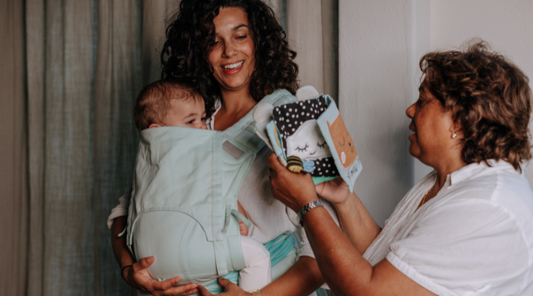Culturally speaking, backpacking is the original way of wearing. Carrying a baby in front of the body is a luxury of modern times. If we had to work with children, as we used to, far fewer parents would probably think of carrying their child in front, as it may also restrict us in some ways.
Back carrying is possible from birth
Carrying on the back is not as difficult as you might think at first. But once you have enjoyed this comfort, it is even more fun. The wrap is best adapted to the conditions, such as the size of the baby. It can therefore form the neck support for the baby‘s non-existent head control: This means that back carrying with a wrap is basically possible from birth. With a carrier, it is advisable to wait until the baby can hold his or her head independently. But it is not only the baby's needs that matter. The pelvic floor of a new mum has withstood pregnancy and birth. It‘s very happy about relief and for this reason mums should listen to their body calmly. A baby weighing 8 kg can often be carried more easily on the back.


Feet free or bound?
Some parents bind the feet or put the baby in a carrier. However, the lower legs should normally be free to move. There are, nevertheless, moments when lightly wrapping the feet has a positive effect. This is possible with an elastic baby wrap or with the pre-tied wrap cross carry. In this case, the outer strap is simply pulled slightly over the feet. There is no pressure, but the babies experience support and limitation, just like in the mother's tummy. This has a positive effect on the regulation of some babies and they find rest more easily.
Spread-squat-position
The human being is a physiological premature birth: for the most part, the skeleton of a newborn consists of cartilage and its hip joint is not yet fully developed. In every newborn, the hip joint is at a different stage of development. After birth, the hip continues to mature until the end of the first year of life, and for optimal development it is important to strengthen the acetabulum. The squatting position is the most favourable for this. Especially the youngest children often do not open their legs yet. Here it is more important to make sure that they have squatted the knees up to the navel, just like in the womb. Hip flexion splints for the therapy of hip dysplasia produce exactly this posture.












